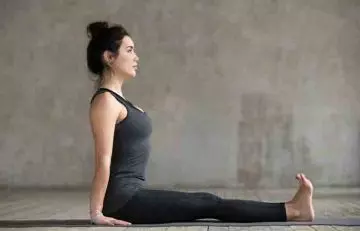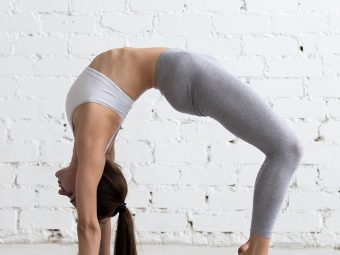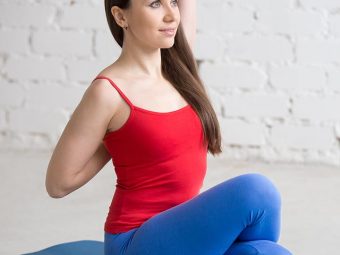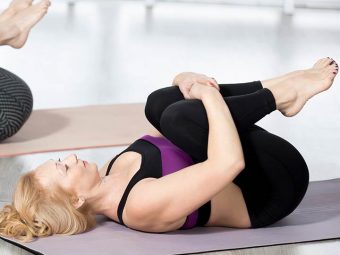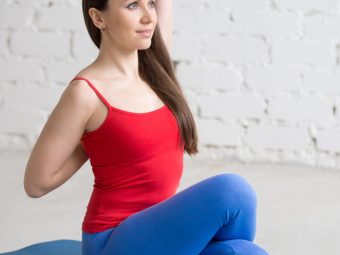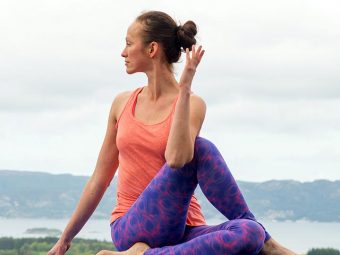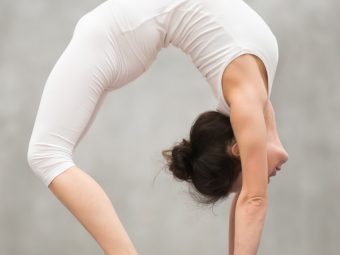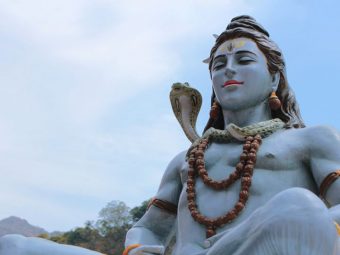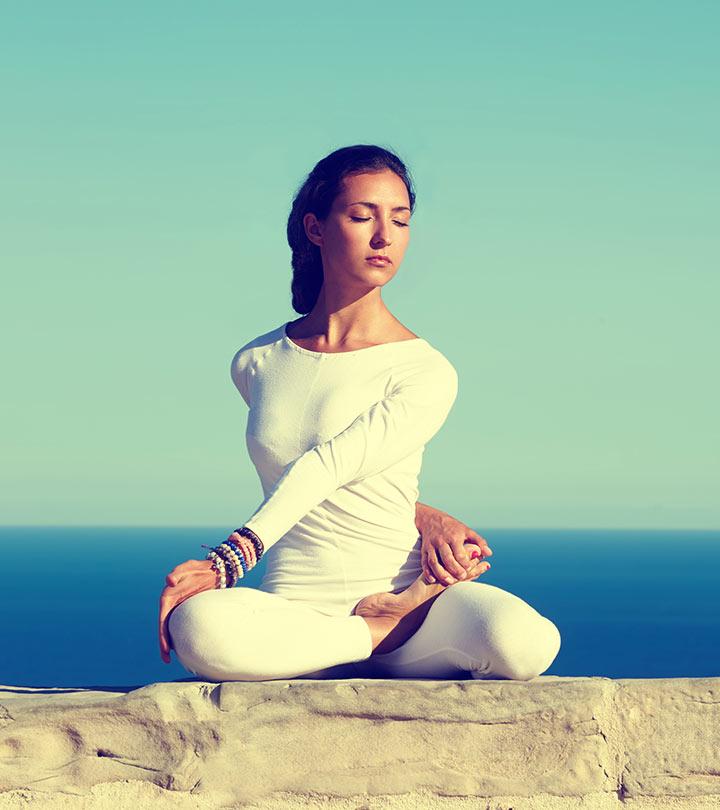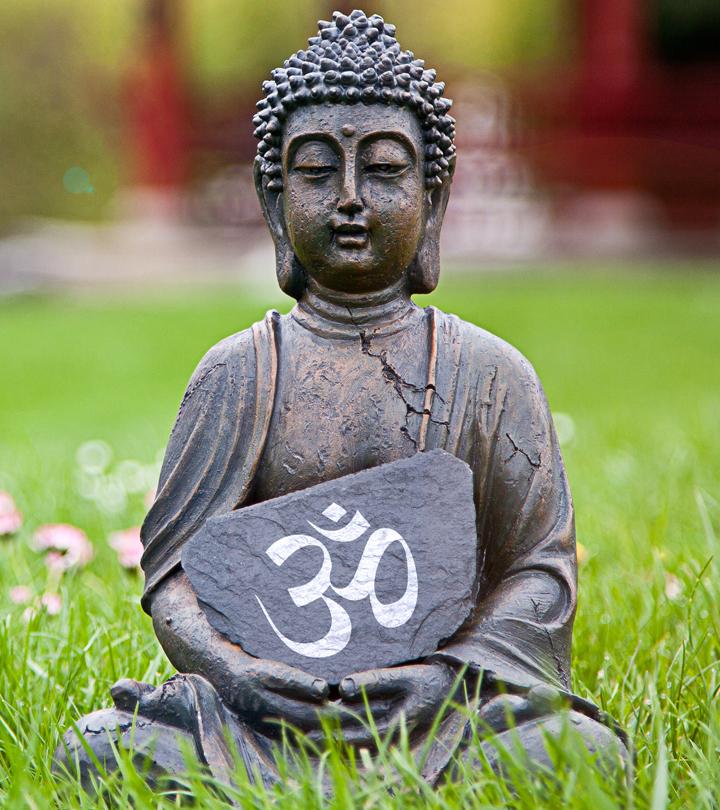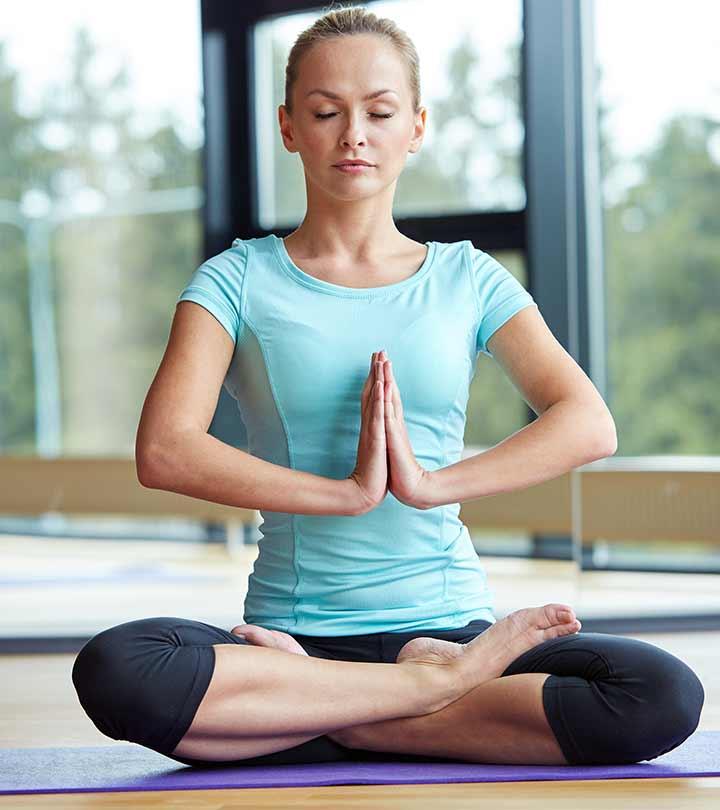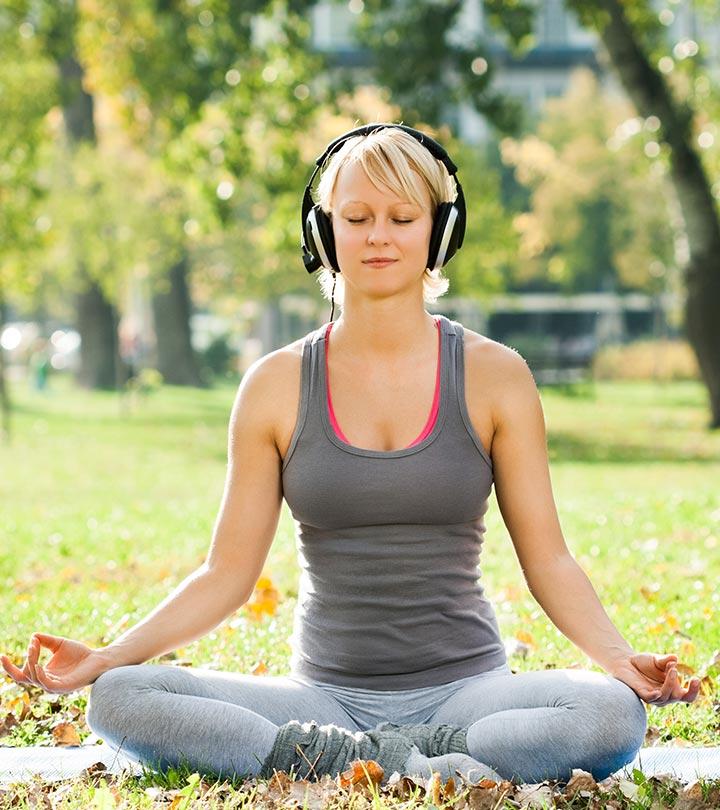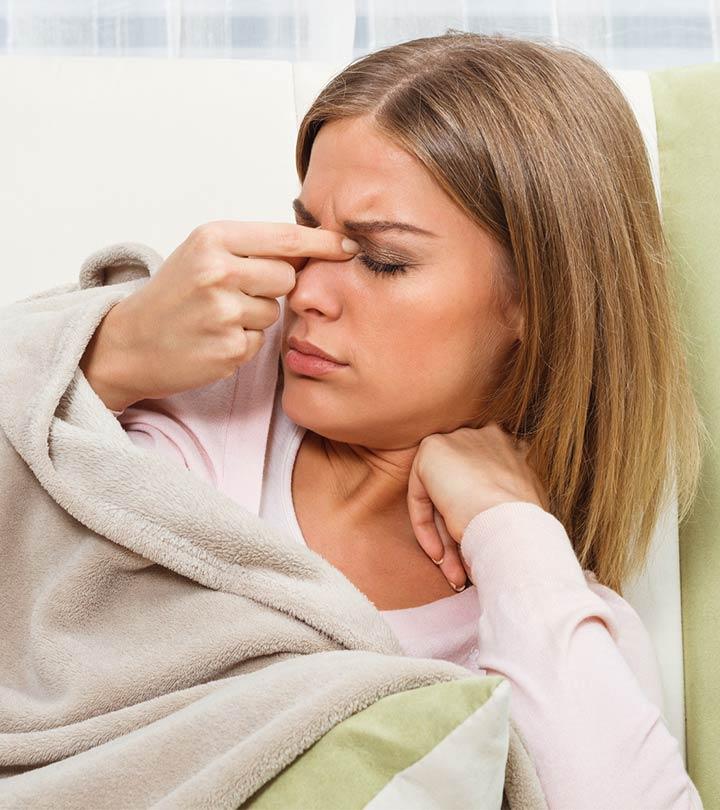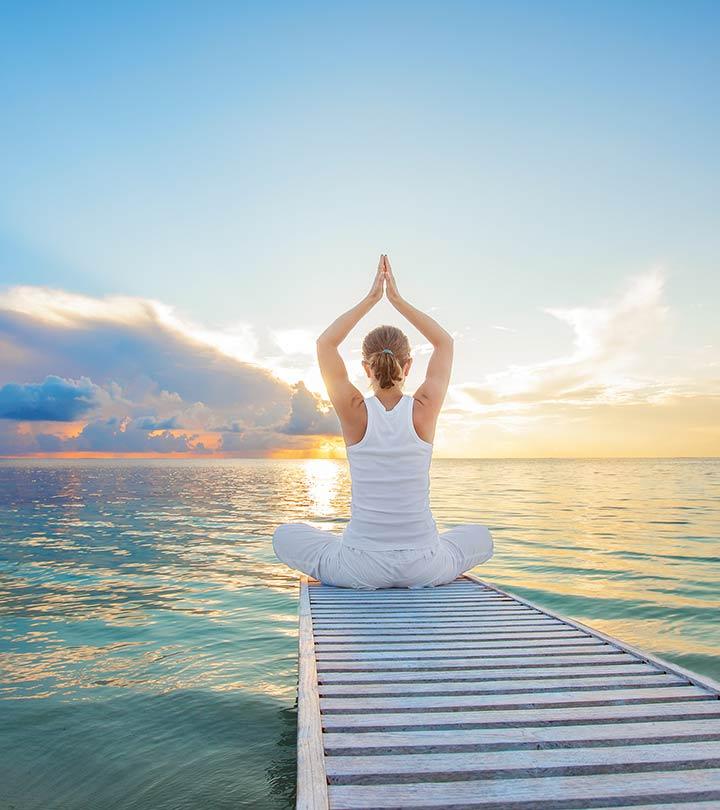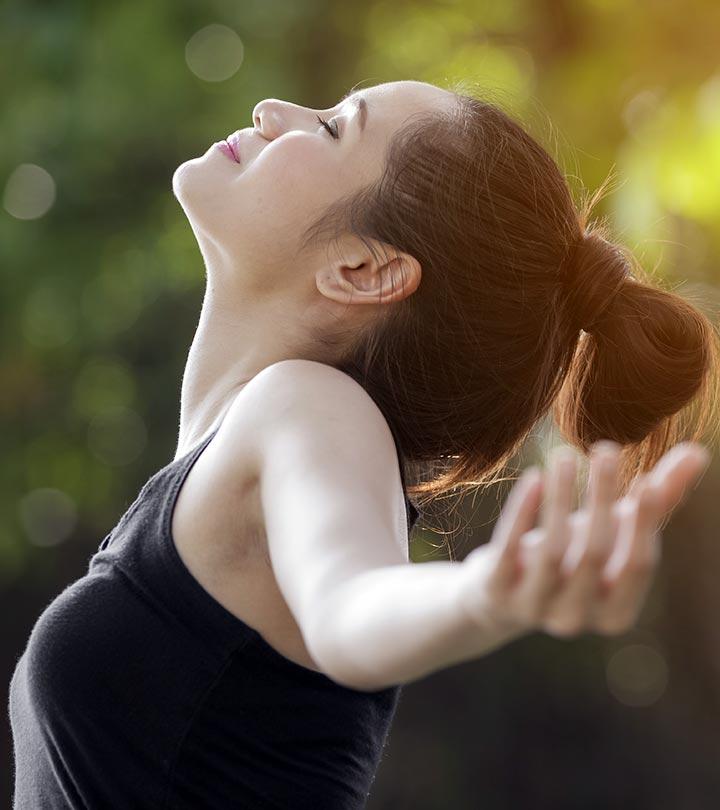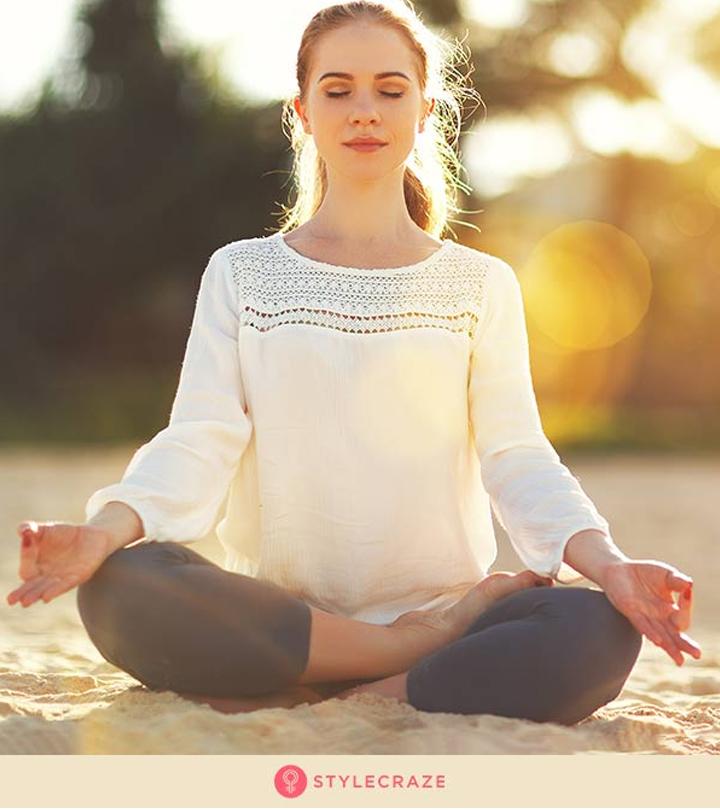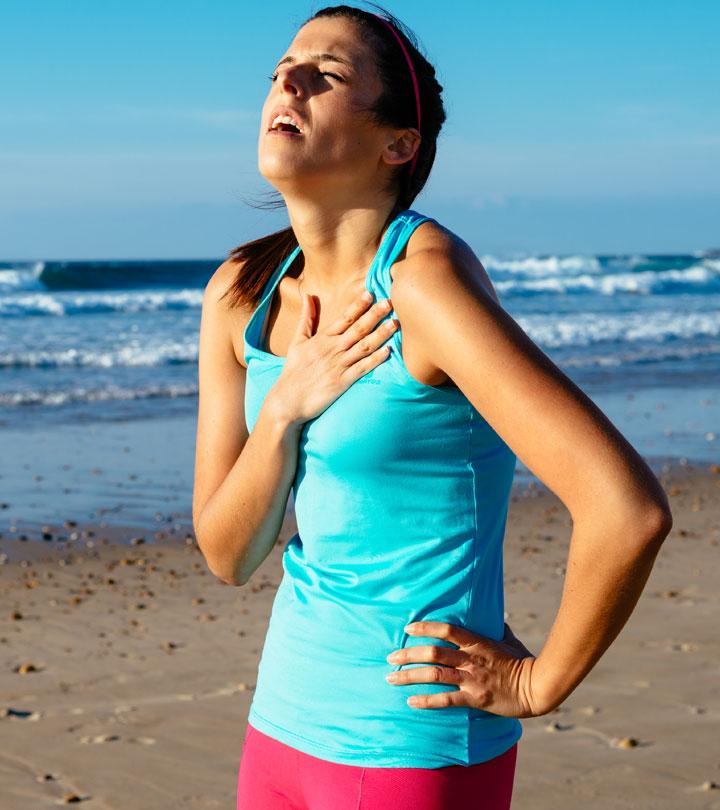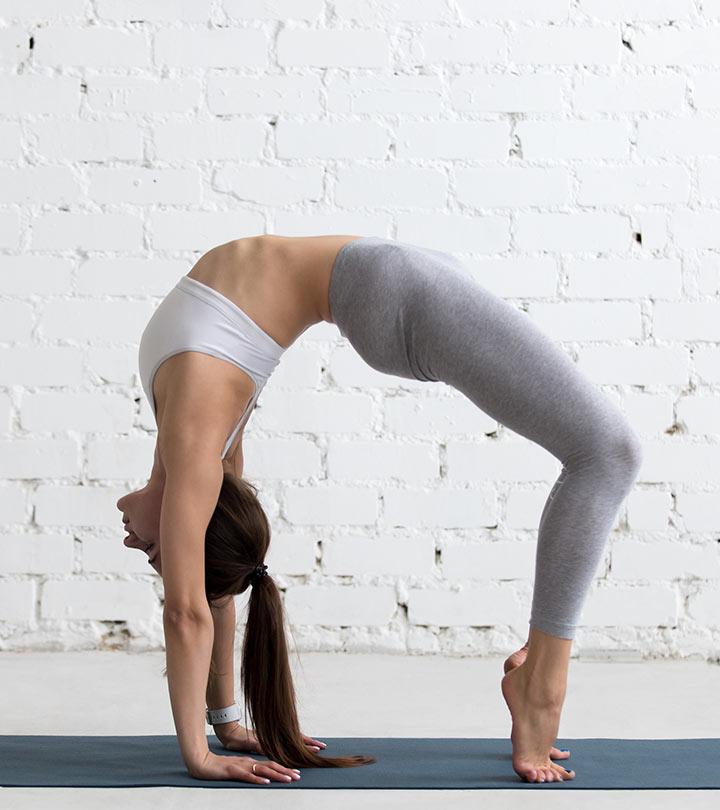9 Benefits Of Paschimottanasana, Precautions, & How To Do It
A complete guide to performing this yoga pose correctly and maximizing its benefits.
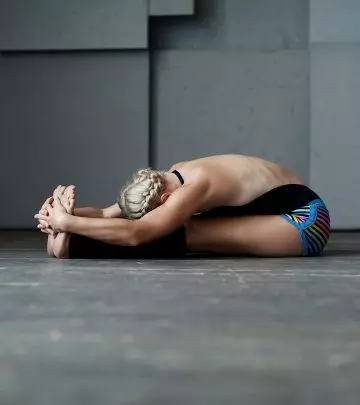
Image: i Stock
Paschimottanasana, Seated Forward Bend, or Intense Dorsal Stretch is an asana. Sanskrit: पश्चिमोत्तानासन; Paschima – West/Back, Uttana – Intense Stretch, Asana – Pose; Pronounced as – POSH-ee-moh-tan-AHS-anna
Here, we will be discussing the benefits of paschimottanasana. You have landed in the right place. This apparently straightforward asana is a basic hatha yoga stance with numerous advantages. The Paschimottanasana is beneficial for various body systems and high blood pressure and diabetes. This yoga asana provides an excellent stretch to the entire body. Surprisingly, the East is referred to as the front of the body, while the West refers to the back. This asana is named on the rear of the body. This yoga asana is also known as the Seated Forward Bend or the Intense Dorsal Stretch in English. Let’s learn more about it below.
 Did You Know?
Did You Know?Paschimottanasana.
In This Article
Everything You Need To Know About The Paschimottanasana
What You Should Know Before You Do The Asana
You must make sure to keep your stomach and bowels empty before you practice this asana. Have your meals at least four to six hours before you do the asana so that your food gets digested and there is enough energy for you to expend during the practice.
It is best to practice yoga first thing in the morning after having done some other stretches. This forward fold does not come easily, and the body has to be opened first before attempting this asana. But in the event you cannot work out in the morning, it is alright to practice it in the evening.
Level: Basic
Style: Hatha Yoga
Duration: 30 – 60 seconds
Repetition: None
Stretches: Vertebral column, Shoulders, Hamstringsi XA group of three posterior muscles located between the thighs and knees which help walk, run, extend the legs, and bend the knees.
Strengthens: Back, Spine
 Trivia
TriviaThe description of Paschimottanasana was recorded in the second chapter of the Gheranda Samhita’s (a classic text of Hatha yoga) for the first time.
How To Do The Paschimottanasana
- Sit erect (in Dandasana), with your legs stretched out in front of you. Make sure that your toes are flexed towards you.
- Inhale and raise your arms over your head. Stretch.
- Exhale and bend forward. Feel the fold from your hip joints. Your chin should move towards your shins.
- Stretch out your arms, and let them reach the furthest they can, possibly till your toes. But make sure that you don’t stretch too far.
- Inhale. Then, lifting your head slightly, elongates your spine.
- Exhale and move your navel towards your knees.
- Repeat this a few times. Then, place your head on your legs, and hold the pose.
- Inhale and come up back to the sitting position with your arms stretched out.
- Exhale and lower your arms.
A yogini blogger writes about the blissful feeling of being in a perfect Paschimottanasana. She began her evening yoga with a headstand and Halasana, then moved into the Paschimottsana pose. She writes, “Today, sitting forward bend felt just like the one in that dream. The reverence of a deep bow…residing in the beauty of the present moment asking me to honour my experiences… (i).”
Learn the top 14 benefits of Paschimottanasana in this informative video! Improve your flexibility, reduce stress, and more! Check it out.
Precautions And Contraindications
These are a few points of caution you must keep in mind before you do this asana.
- Avoid this asana if you have asthma or diarrhea.
- In case you have a back injury, you must make sure to practice this asana only under the guidance of a certified yoga instructor.
- Pregnant women can attempt this posture with legs separated (so that the fetus and navel are not compromised) and expand the chest upwards.
Beginner’s Tip
As a beginner, you must remember to never push yourself if you are not comfortable in a forward bend. This is more important if the asana entails sitting on the floor. When you move forward, and you feel that the space between your navel and pubis is reducing, stop, lift yourself a little, and continue moving forward. As a beginner, your tight hamstring muscles might make it difficult for you to bend too much, and it might look like you are sitting. It’s alright. With practice, your body will become far more flexible.
Advanced Pose Alteration
To increase the stretch while you are in this asana, you need to re-extend your elbows. To do this, once you are in the asana, you must clasp your hands around the soles of your feet. You could also turn the back of one hand to the sole, and grip the wrist with the other hand.
The Benefits Of The Seated Forward Bend
These are some amazing benefits of Paschimottanasana.
- This asana exerts a calming effect on the mind and also relieves mild depression and stress.
- The shoulders, spine, and hamstrings get a good stretch.
- The kidneys, liver, uterus, pancreas, and ovaries are activated.
- Practicing this asana regularly helps improve digestion.
- This asana can offer relief during menopausei XThe natural decline of the reproductive hormones in women that usually happens after the 40s or 50s. and menstrual discomfort.
- Anxiety, headaches, and fatigue are reduced.
- High blood pressure, insomniai XA common sleep disorder in which you have difficulty falling and staying asleep or waking up too early. , infertility, and sinusitisi XAn inflammation or swelling of the cavities around the nasal passages triggered by a cold or allergies. can be cured with this asana.
- Paschimottanasana is said to cure diseases, increase appetite, and reduce obesity.
- This asana works particularly well for women after they have delivered a child.
The Science Behind The Paschimottanasana
This rejuvenating asana is a good stretch for the back part of the body, all the way from the ankles to the head. The muscles of the anterior part of the body are contracted, and this creates pressure on the abdomen and thorax, thereby, improving respiratory functions and the functioning of the intra-abdominal glands, specifically focusing on secretions. The flexibility in the lumbar regioni XThe lower back region between the pelvis and chest area which contains five moveable vertebrae. , the thighs, and the hips is improved. There is an enhancement in the circulation of the blood in the back, and the nerves of the spinal cord are toned. This seated pose asana also helps reduce fat in the hips, thighs, and abdomen region. This asana purifies the Nadis and also stimulates the Kundalini Shakti.
Preparatory Poses
Uttanasana
Janu Sirsasana
Bālāsana
Follow-Up Poses
Paschimottanasana: Target Muscles & Easier Variations
Paschimottanasana is one of the foundational poses of yoga and is highly beneficial for the body. For better form and results, it is recommended to be performed under the supervision of a yoga instructor. However, if you are wondering what muscles this asana targets, worry not! This infographic empowers you with some basic details that will help you in your yoga journey. Take a look! Illustration: StyleCraze Design Team
Paschimottanasana is a fundamental hatha yoga asana that provides several health benefits. This asana is good for various physiological systems, including high blood pressure and diabetes, and even helps with sciatica. In addition, paschimottanasana benefits the entire body and provides a great stretch. From the ankles to the head, this asana stretches the back half of the body. It also aids in the reduction of fat in the thighs, hips, and abdomen. This asana can help with the symptoms of menstrual discomfort and menopause. However, before performing this asana, make sure your bowels and stomach are empty.
Frequently Asked Questions
Does paschimottanasana increase one’s height?
Practicing paschimottanasana daily may help children increase their height in their formative years (1).
Why is paschimottanasana difficult?
Paschimottanasana can be difficult, especially for people whose legs are longer than their torso (1). If you find it challenging to attain the perfect pose, relax your body and stick to the position comfortable for you.
What do you do after paschimottanasana?
You can do purvottanasana after paschimottanasana. It is a counter stretch pose that stretches your body right from your shoulders to your toes and stimulates energy throughout your body.
Key Takeaways
- Paschimottanasana stretches the muscles and is performed by sitting on the floor with the legs stretched out.
- This is a great pose for beginners and can be modified as per levels of flexibility.
- This asana may provide relief from menstrual discomfort and reduce anxiety and headaches.
- Practicing this asana may help treat high blood pressure, insomnia, and infertility.
Personal Experience: Source
StyleCraze's articles are interwoven with authentic personal narratives that provide depth and resonance to our content. Below are the sources of the personal accounts referenced in this article.
i.Paschimottanasana- The reverence of a deep bowhttps://yogabhimalight.wordpress.com/2013/02/22/paschimottanasana-the-reverence-of-a-deep-bow/
References
Articles on StyleCraze are backed by verified information from peer-reviewed and academic research papers, reputed organizations, research institutions, and medical associations to ensure accuracy and relevance. Read our editorial policy to learn more.
- Paschimottanasana And Its Physio Anatomical Aspect
https://ayurpub.com/wp-content/uploads/2016/08/286-292.pdf






